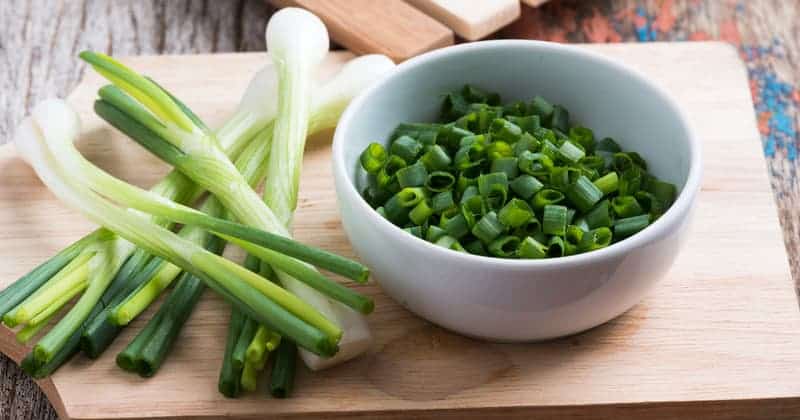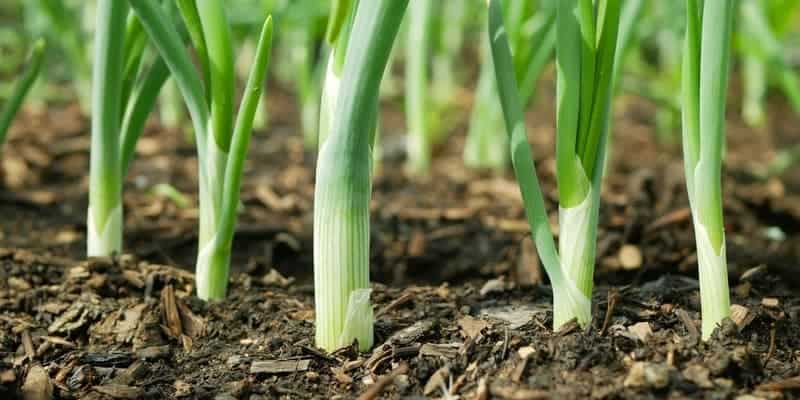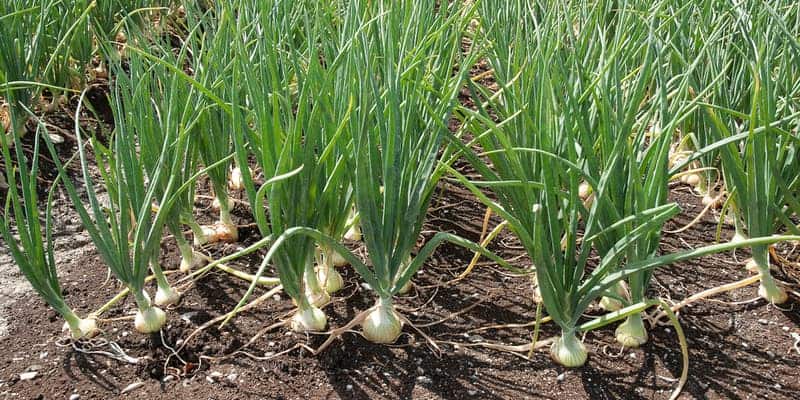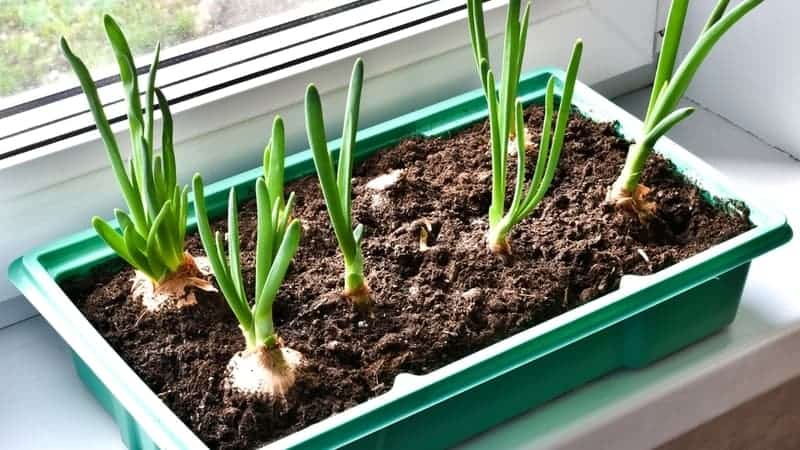Whatever you’re picturing when you hear “spring onion” – those are actually green onions or shallots. True spring onions or salad onions are immature onions with small bulbs, while green onions don’t have bulbs. Instead, they have stiff, white stalks and stringy roots.
Just to make it simple, though, let’s call them spring onions.
Growing spring onions is very straightforward. You can replant store-bought shallots or plant spring onion seeds. For propagation, it’s as easy as bunching onions together and cutting the leaves back by two-thirds. Then place each spring onion in the soil, covering the white stem. Otherwise, sow seeds 6.0mm deep in seed mix and water well.
Ready to add some fresh allium crunch to your dishes? Here’s how to grow spring onions in two ways.
About Spring Onions
Spring onions (meaning the green onion) are Allium fistulosum, while true onions are Allium cepa. Other members of the allium family include leeks, chives, and even garlic! They’re great for adding flavour and punch to any dish – but maybe don’t swap garlic and shallots in a recipe.
Spring onions have slender green leaves that can reach up to 50cm long. The leaves are hollow, and give off a mild flavour when cut or crushed. At the base of the leaves is a stiff, white stalk (sometimes called a shank).
Shallots do not form bulbs unlike other members of the onion family.
These perennial bunching onions are great for cooking, especially in stir-fries. You can cut the leaves and chop them up for garnish. When it comes to the stalks, they’re a flavourful addition to stews and soups. They can even be eaten raw, although that’s a strong pungent flavour.
Spring Onion Growing Conditions
Before you get to planting spring onions, though, let’s talk about getting their growing conditions right. Here’s all you need to know to get the best continual harvest.
How much sun do spring onions need?
The spring onion likes full sun, so plant it somewhere that gets lots of light but has shelter from any strong winds.
What soil to use for spring onions?
Your plants will like well-draining soil that’s slightly acidic – a pH of about 5.0–6.0. They’re pretty adaptable, though, and can tolerate a pH of up to 7.0.
What climate can spring onions grow in?
Spring onions can grow in all climates! Those in tropical and sub-tropical climates can plant them year-round, but in cool temperate zones, grow spring onions in early spring.
When to water spring onions?
Keep the soil moist, but try not to overwater. You can layer organic mulch (such as pea straw) around the base to help retain water in the soil.
Do spring onions have pests and diseases?
Common pests for shallots are aphids, which are easily treated with a neem oil spray. They’re also susceptible to a fungal disease called downy mildew if conditions are humid. Ensure your plants have good air circulation!
Planting Spring Onions
You can plant spring onions pretty much anywhere, whether in a pot or in garden beds. There are two ways to grow spring onions: from seed or from a whole plant.
If you need help getting started or taking care of your plants, you can always consult with a professional gardening service!
How to grow spring onion from seed
Find a spot in the garden that gets full sun. Or, if you’re growing them in a pot, choose one that’s at least 200mm deep.
Plant seeds in a furrow that’s about 5.0–6.0mm deep, then cover with soil or seed starter mix. Water the soil well. You can layer some organic matter over the area to help retain moisture.
Once seedlings have sprouted, thin out the plants. Your spring onions should be spaced about 5.0cm apart. Water regularly, then let them grow. You should have full leaves after just a few weeks.
How to grow spring onion from mature onions
Propagating spring onions is even easier than from seed. Just take the whole plant (even store-bought shallots) and cut the leaves back by two-thirds. Pick a sunny spot with well-drained soil.
Dig a small hole and insert the entire plant, far enough that the white stalk is covered. Backfill the soil and gently firm it down. Water regularly to settle the soil and reduce transplant shock.
After a few weeks, new leaves will begin to grow! You can then divide these into bunches to create more new plants.
Harvesting Spring Onions
You can trim the leaves of spring onions at any point – just don’t cut back more than two-thirds of the plant at a time. If you need to use the stalk, harvest plants that are about 8–10 weeks old.
How to grow spring onions is easy, as is how to use them in cooking. If you plant seeds every few weeks, you can even have a continuous harvest! Then you’ll never lack flavour and crunch in your food, since you’ll have green tops all the time.





